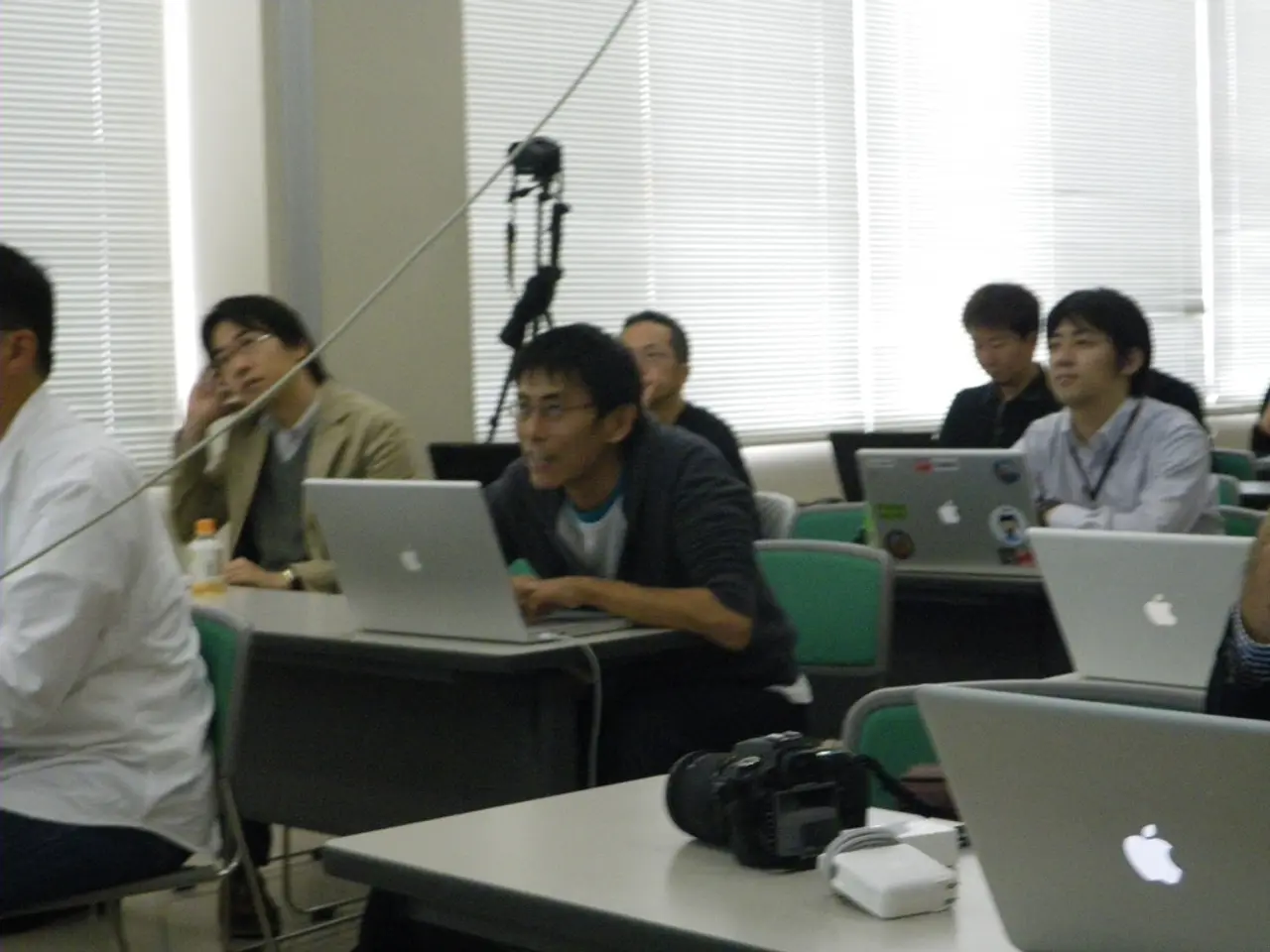Enhanced Learning Processes and the Impacts of Virtual Reality (VR)
Augmented reality (AR) technology is making significant strides in various industries, addressing complex business challenges and revolutionizing workflows. From manufacturing and medical centers to fintech, retail, and consumer applications, AR is proving to be a game-changer.
Knowledge Acquisition
AR technology enhances knowledge acquisition by overlaying digital information directly onto physical equipment in real time. This immediate, contextual guidance allows workers to understand complex machinery and processes more easily and accurately, without relying solely on traditional manuals [3][4].
Maintenance and Repair
In maintenance tasks, AR systems guide technicians through procedures by highlighting specific machine parts and displaying instructions directly in their field of view. This hands-free approach, enabled by AR-enabled smart glasses, reduces downtime and improves repair accuracy [1][2][4]. Moreover, remote AR support allows offsite experts to see exactly what onsite workers see, mark components, and provide real-time troubleshooting assistance, further reducing downtime.
Job Training
AR has significantly improved industrial job training by delivering immersive, on-the-job learning experiences. New workers receive real-time, visual instructions as they operate complex machinery, boosting confidence and competence even in high-risk environments. AR training tools also allow for blended reality labs, where learners interact with physical tools augmented by digital feedback, accelerating the transition from theory to practice and improving knowledge retention [3][4].
Expert Assistance
With AR, expert assistance is often provided remotely. Specialists can view the exact situation through the onsite worker’s AR device, mark up the worker’s visual field with annotations, and direct corrective actions while accessing documents and manuals simultaneously. Leading platforms like Microsoft HoloLens have been widely adopted for such remote collaboration, significantly enhancing the quality and speed of expert support [2][3].
Moreover, technicians can retain the data acquired for later use using AR visual assistance software. A recent study on 68 students revealed that participants using the AR system retained adequate memory of procedural operations two weeks after completing the classes [5].
Educational augmented reality apps also enhance employees' technical skills by allowing them to see inside and click on the elements for better explanations. AR is even used for product training, where you do not even need to have the products on hand to present them to employees [6].
The US Workforce Knowledge Report reveals that employees find it extremely challenging to replace hands-on experience once it is lost [7]. Technologies that use augmented reality provide a dynamic alternative to conventional training, offering a safer, faster, and more knowledgeable industrial workforce [1][3][4].
- Augmented reality (AR) technology in education-and-self-development is facilitating the learning process by providing interactive, visual explanations of technical components through software.
- The manufacturing industry is leveraging AR technology to streamline job training, giving new workers immersive, on-the-job lessons that combine digital feedback with physical tools.
- AR technology has revolutionized maintenance and repair in various industries, allowing technicians to receive real-time guidance through smart glasses and accelerating the resolution of complex issues.
- Finance businesses are embracing AR technology to strengthen remote expert assistance, allowing specialists to provide instant guidance and annotate onsite workers' fields of view.
- Construction enterprises are utilizing AR technology for data-and-cloud-computing, enabling workers to access manuals and documents simultaneously during complex machinery operations.
- AR technology is being used in the software industry to enhance product training, providing comprehensive explanations without requiring physical products on hand.
- The use of AR technology in various industries, including construction, manufacturing, and finance, is contributing to a more skilled, knowledgeable, and efficient workforce by simplifying training and improving the retention of procedural knowledge.




